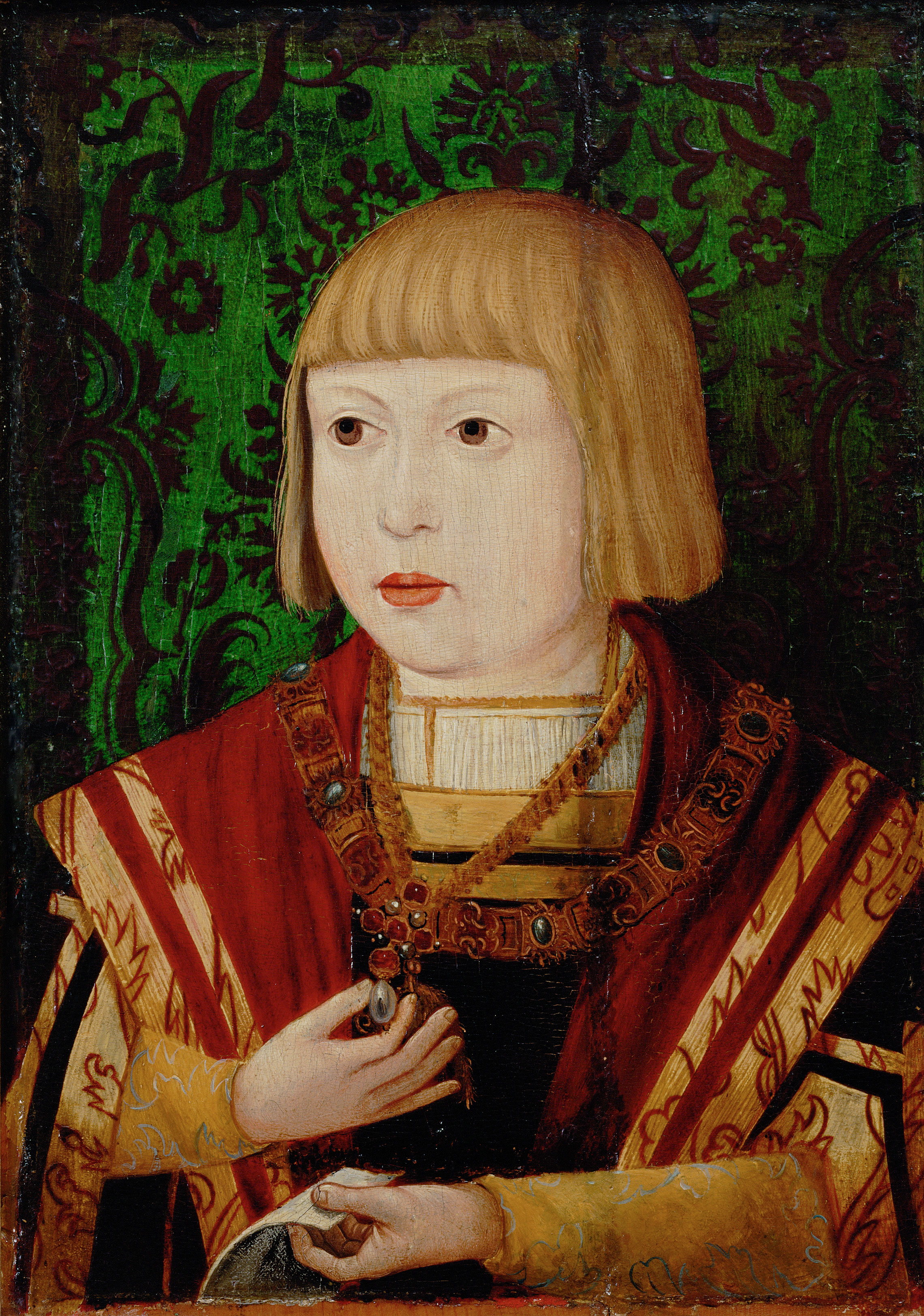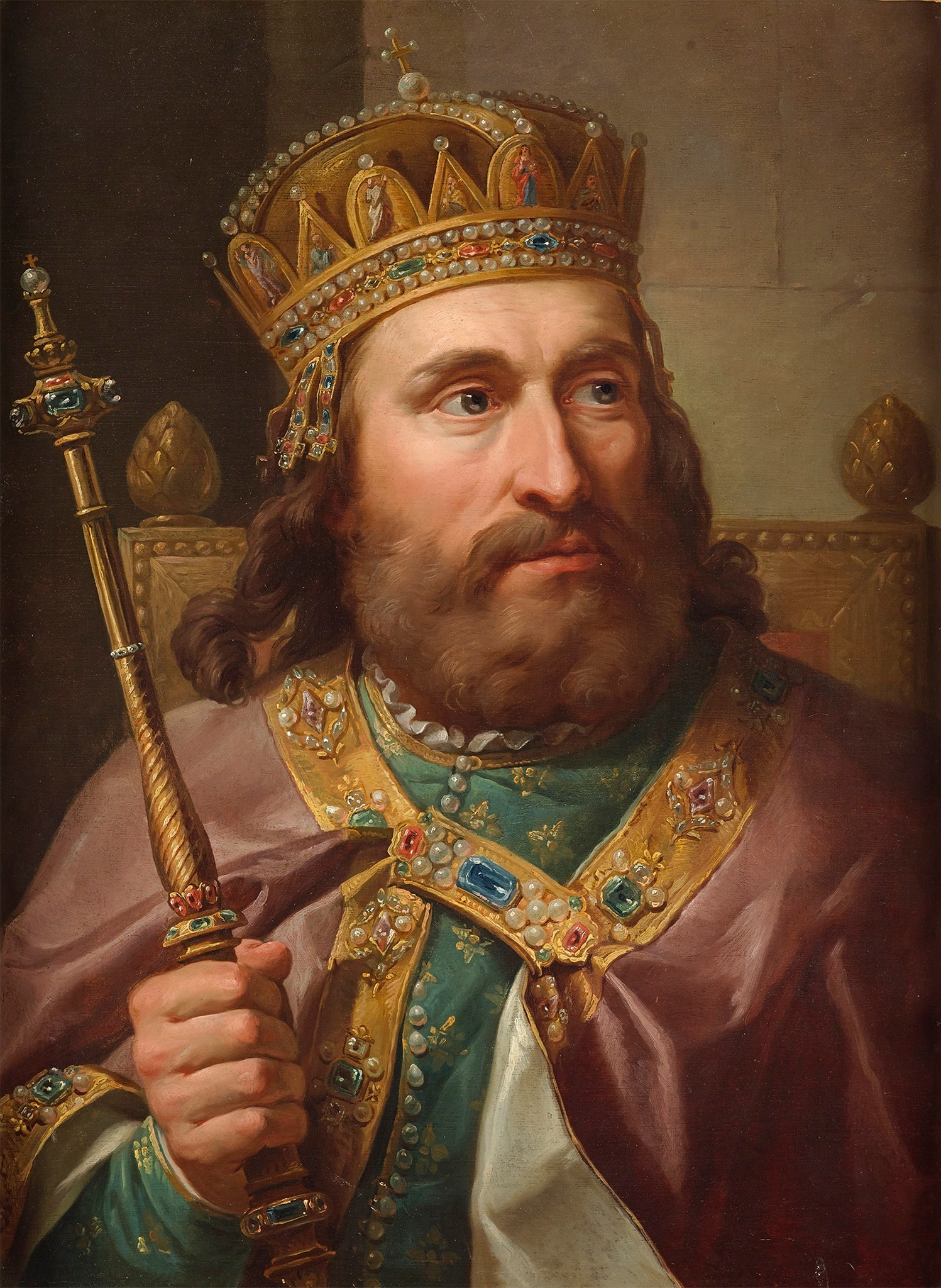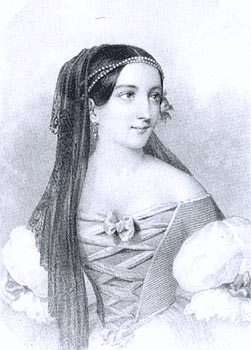|
St. Michael's Church, Cluj-Napoca
} The St. Michael's Church ( ro, Biserica Sfântul Mihail, hu, Szent Mihály-templom, german: Michaelskirche) is a Gothic-style Roman Catholic church in Cluj-Napoca. It is the second largest church (after the Biserica Neagră of Brașov) in the geographical region of Transylvania, Romania. The nave is 50 meters long and 24 meters wide, the apse is 20×10 m. The tower with its height of 76 meter (80 meter including the cross) is the highest one in Transylvania. History The construction was begun probably in place of the Saint James Chapel. The financing of the church was partly done by the citizens, partly from the income of indulgences. The first related document, dating back to 1349 and signed by the archbishop of Avignon and fifteen other bishops, grants the indulgence for those contributing to the illumination and furniture of the Saint Michael Church. The construction was completed between 1442-1447, the old tower being built between 1511-1545. The tower that stands today w ... [...More Info...] [...Related Items...] OR: [Wikipedia] [Google] [Baidu] |
James, Son Of Zebedee
James the Great, also known as James, son of Zebedee, Saint James the Great, Saint James the Greater, Saint James the Elder, or Saint Jacob (Aramaic ܝܥܩܘܒ ܒܪ ܙܒܕܝ, Arabic يعقوب, Hebrew בן זבדי , '' Yaʿăqōḇ'', Latin ''Iacobus Maior'', Greek Ἰάκωβος τοῦ Ζεβεδαίου ''Iákōbos tû Zebedaíou''; died AD 44), was one of the Twelve Apostles of Jesus, the first apostle to be martyred according to the New Testament. Saint James is the patron saint of Spain and, according to tradition, his remains are held in Santiago de Compostela in Galicia. In the New Testament The son of Zebedee and Salome, James is styled "the Greater" to distinguish him from the Apostle James "the Less", with "greater" meaning older or taller, rather than more important. James the Great was the brother of John the Apostle. James is described as one of the first disciples to join Jesus. The Synoptic Gospels state that James and John were with their father by th ... [...More Info...] [...Related Items...] OR: [Wikipedia] [Google] [Baidu] |
Gabriel Bethlen
Gabriel Bethlen ( hu, Bethlen Gábor; 15 November 1580 – 15 November 1629) was Prince of Transylvania from 1613 to 1629 and Duke of Opole from 1622 to 1625. He was also King-elect of Hungary from 1620 to 1621, but he never took control of the whole kingdom. Bethlen, supported by the Ottomans, led his Calvinist principality against the Habsburgs and their Catholic allies. Early life Gabriel was the elder of the two sons of Farkas Bethlen de Iktár and Druzsiána Lázár de Szárhegy. Gabriel was born in his father's estate, Marosillye (now Ilia in Romania), on 15 November 1580. Farkas Bethlen was a Hungarian nobleman who lost his ancestral estate, Iktár (now Ictar-Budinț in Romania), due to the Ottoman occupation of the central territories of the Kingdom of Hungary. Stephen Báthory, Prince of Transylvania, granted Marosillye to him and made him captain-general of the principality. Druzsiána Lázár was descended from a Székely noble family. Both Farkas Bethlen ... [...More Info...] [...Related Items...] OR: [Wikipedia] [Google] [Baidu] |
Gabriel Báthory
Gabriel Báthory ( hu, Báthory Gábor; 15 August 1589 – 27 October 1613) was Prince of Transylvania from 1608 to 1613. Born to the Roman Catholic branch of the Báthory family, he was closely related to four rulers of the Principality of Transylvania (a vassal state of the Ottoman Empire which had developed in the eastern territories of the medieval Kingdom of Hungary). His father, Stephen Báthory (1553–1601), Stephen Báthory, held estates in the principality, but never ruled it. Being a minor when his father died in 1601, Gabriel became the ward (law), ward of the childless Stephen Báthory (1555–1605), Stephen Báthory, from the Protestant branch of the family, who converted him to Calvinism. After inheriting most of his legal guardian, guardian's estates in 1605, Gabriel became one of the wealthiest landowners in Transylvania and Royal Hungary (a realm of the Habsburg Empire which included the northern and western parts of medieval Hungary). Gabriel made an allia ... [...More Info...] [...Related Items...] OR: [Wikipedia] [Google] [Baidu] |
Sigismund Rákóczi
Sigismund Rákóczi ( hu, Rákóczi Zsigmond; 1544 – 5 December 1608) was Prince of Transylvania from 1607 to 1608. He was the son of János Rákóczi, a lesser nobleman with estates in Upper Hungary. Sigismund began a military career as the sword-bearer of the wealthy Gábor Perényi in Sárospatak. After Perényi died in 1567, Sigismund served in the royal fortresses of Eger and Szendrő. The royal chamber mortgaged him several estates to compensate him for unpaid salaries. He received Szerencs in 1580, which enabled him to engage in the lucrative Tokaji wine trade. He took possession of the large estates of András Mágóchy's minor sons as their guardian, and the second husband of their mother Judit Alaghy, in 1587. Sigismund was made the captain of the important stronghold of Eger on 29 June 1588. Rudolph I, King of Hungary, granted him the title of baron on 28 August. Sigismund rose to fame after he routed the united forces of three Ottoman ''beys'' (captains) near ... [...More Info...] [...Related Items...] OR: [Wikipedia] [Google] [Baidu] |
Sigismund Báthory
Sigismund Báthory ( hu, Báthory Zsigmond; 1573 – 27 March 1613) was Prince of Transylvania several times between 1586 and 1602, and Duke of Racibórz and Opole in Silesia in 1598. His father, Christopher Báthory, ruled Transylvania as voivode (or deputy) of the absent prince, Stephen Báthory. Sigismund was still a child when the Diet of Transylvania elected him voivode at his dying father's request in 1581. Initially, regency councils administered Transylvania on his behalf, but Stephen Báthory made János Ghyczy the sole regent in 1585. Sigismund adopted the title of prince after Stephen Báthory died. The Diet proclaimed Sigismund to be of age in 1588, but only after he agreed to expel the Jesuits. Pope Sixtus V excommunicated him, but the ban was lifted in 1590, and the Jesuits returned a year later. His blatant favoritism towards the Catholics made him unpopular among his Protestant subjects. He decided to join the Holy League against the Ottoman Empire. Since he ... [...More Info...] [...Related Items...] OR: [Wikipedia] [Google] [Baidu] |
John II Sigismund Zápolya
John is a common English name and surname: * John (given name) * John (surname) John may also refer to: New Testament Works * Gospel of John, a title often shortened to John * First Epistle of John, often shortened to 1 John * Second Epistle of John, often shortened to 2 John * Third Epistle of John, often shortened to 3 John People * John the Baptist (died c. AD 30), regarded as a prophet and the forerunner of Jesus Christ * John the Apostle (lived c. AD 30), one of the twelve apostles of Jesus * John the Evangelist, assigned author of the Fourth Gospel, once identified with the Apostle * John of Patmos, also known as John the Divine or John the Revelator, the author of the Book of Revelation, once identified with the Apostle * John the Presbyter, a figure either identified with or distinguished from the Apostle, the Evangelist and John of Patmos Other people with the given name Religious figures * John, father of Andrew the Apostle and Saint Peter * Pope ... [...More Info...] [...Related Items...] OR: [Wikipedia] [Google] [Baidu] |
Ferdinand I, Holy Roman Emperor
Ferdinand I ( es, Fernando I; 10 March 1503 – 25 July 1564) was Holy Roman Emperor from 1556, King of Bohemia, Hungary, and Croatia from 1526, and Archduke of Austria from 1521 until his death in 1564.Milan Kruhek: Cetin, grad izbornog sabora Kraljevine Hrvatske 1527, Karlovačka Županija, 1997, Karslovac Before his accession as Emperor, he ruled the Austrian hereditary lands of the Habsburgs in the name of his elder brother, Charles V, Holy Roman Emperor. Also, he often served as Charles' representative in the Holy Roman Empire and developed encouraging relationships with German princes. In addition, Ferdinand also developed valuable relationships with the German banking house of Jakob Fugger and the Catalan bank, Banca Palenzuela Levi Kahana. The key events during his reign were the conflict with the Ottoman Empire, which in the 1520s began a great advance into Central Europe, and the Protestant Reformation, which resulted in several wars of religion. Although not ... [...More Info...] [...Related Items...] OR: [Wikipedia] [Google] [Baidu] |
Hungarian Crown
The Hungarian Crown ( pl, Korona Węgierska) was a part of the Polish Crown Jewels. It was made in the 16th century, resembling the Crown of Saint Stephen, as a private crown of John II Sigismund Zápolya. History The original Hungarian Regalia were handed over by Queen Isabella Jagiellon to Ferdinand of Austria in 1551, when she was forced to leave Transylvania, which fell into Ferdinand's hands in accordance with the treaty of Nyírbátor. According to a contemporary Polish chronicler, she broke the cross off the Crown of Saint Stephen’s peak for her son, John Sigismund Zápolya. The copy of the main Hungarian insignium was probably made at that time. After John Sigismund's death the crown was inherited in 1571 by King Sigismund II Augustus of Poland, Isabella's brother. The Polish king treated the crown of Hungary as a family keepsake, and kept it in a private vault in the Tykocin Castle. In 1572, when the last of the Jagiellons died the insignium was used as an exequial ... [...More Info...] [...Related Items...] OR: [Wikipedia] [Google] [Baidu] |
Isabella Jagiełło
Isabella Jagiellon ( hu, Izabella királyné, links=no; pl, Izabela Jagiellonka, links=no; 18 January 1519 – 15 September 1559) was the Queen consort of Hungary. She was the oldest child of Polish King Sigismund I the Old, the Grand Duke of Lithuania and his Italian wife Bona Sforza. In 1539, she married John Zápolya, Voivode of Transylvania and King of Hungary. At the time Hungary was contested between Archduke Ferdinand of Austria who wanted to add it to the Habsburg domains (see Royal Hungary), local nobles who wanted to keep Hungary independent (see Eastern Hungarian Kingdom), and Sultan Suleiman the Magnificent who saw it as a vassal state of the Ottoman Empire (see also Little War in Hungary). While Isabella's marriage lasted only a year and a half, it did produce a male heir – John Sigismund Zápolya born just two weeks before his father's death in July 1540. She spent the rest of her life embroiled in succession disputes on behalf of her son. Her husband's death spar ... [...More Info...] [...Related Items...] OR: [Wikipedia] [Google] [Baidu] |
Clock Tower
Clock towers are a specific type of structure which house a turret clock and have one or more clock faces on the upper exterior walls. Many clock towers are freestanding structures but they can also adjoin or be located on top of another building. Some other buildings also have clock faces on their exterior but these structures serve other main functions. Clock towers are a common sight in many parts of the world with some being iconic buildings. One example is the Elizabeth Tower in London (usually called "Big Ben", although strictly this name belongs only to the bell inside the tower). Definition There are many structures which may have clocks or clock faces attached to them and some structures have had clocks added to an existing structure. According to the Council on Tall Buildings and Urban Habitat a structure is defined as a building if at least fifty percent of its height is made up of floor plates containing habitable floor area. Structures that do not meet this c ... [...More Info...] [...Related Items...] OR: [Wikipedia] [Google] [Baidu] |
Habsburg
The House of Habsburg (), alternatively spelled Hapsburg in Englishgerman: Haus Habsburg, ; es, Casa de Habsburgo; hu, Habsburg család, it, Casa di Asburgo, nl, Huis van Habsburg, pl, dom Habsburgów, pt, Casa de Habsburgo, la, Domus Habsburg, french: Maison des Habsbourg and also known as the House of Austriagerman: link=no, Haus Österreich, ; es, link=no, Casa de Austria; nl, Huis van Oostenrijk, pl, dom Austrii, la, Domus Austriæ, french: Maison d'Autriche; hu, Ausztria Háza; it, Casa d'Austria; pt, Casa da Áustria is one of the most prominent and important dynasties in European history. The house takes its name from Habsburg Castle, a fortress built in the 1020s in present-day Switzerland by Radbot of Klettgau, who named his fortress Habsburg. His grandson Otto II was the first to take the fortress name as his own, adding "Count of Habsburg" to his title. In 1273, Count Radbot's seventh-generation descendant Rudolph of Habsburg was elected King of the R ... [...More Info...] [...Related Items...] OR: [Wikipedia] [Google] [Baidu] |








